You're viewing version 2.14 of the OpenSearch documentation. This version is no longer maintained. For the latest version, see the current documentation. For information about OpenSearch version maintenance, see Release Schedule and Maintenance Policy.
Configuring and using multiple data sources
You can ingest, process, and analyze data from multiple data sources in OpenSearch Dashboards. You configure the data sources in the Dashboards Management > Data sources app, as shown in the following image.
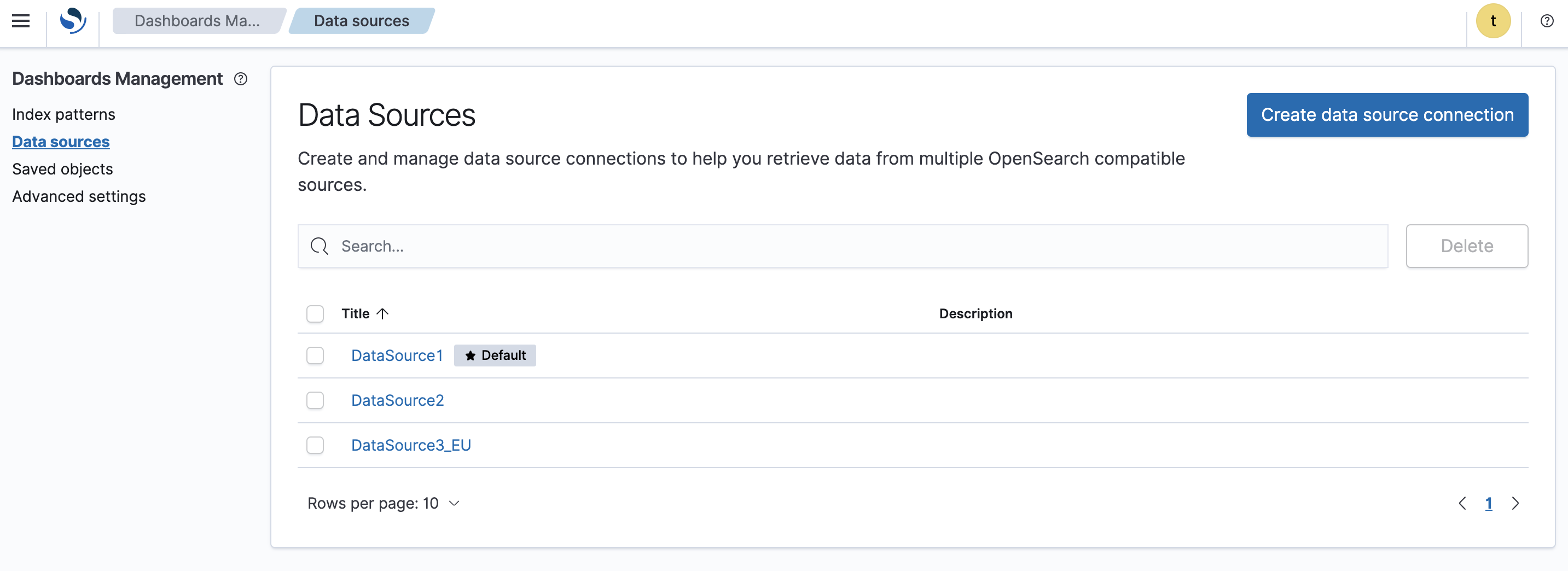
Getting started
The following tutorial guides you through configuring and using multiple data sources.
Step 1: Modify the YAML file settings
To use multiple data sources, you must enable the data_source.enabled setting. It is disabled by default. To enable multiple data sources:
- Open your local copy of the OpenSearch Dashboards configuration file,
opensearch_dashboards.yml. If you don’t have a copy,opensearch_dashboards.ymlis available on GitHub. - Set
data_source.enabled:totrueand save the YAML file. - Restart the OpenSearch Dashboards container.
- Verify that the configuration settings were configured properly by connecting to OpenSearch Dashboards and viewing the Dashboards Management navigation menu. Data sources appears in the sidebar. You’ll see a view similar to the following image.

Step 2: Create a new data source connection
A data source connection specifies the parameters needed to connect to a data source. These parameters form a connection string for the data source.
To create a new data source connection:
-
From the OpenSearch Dashboards main menu, select Dashboards Management > Data sources > Create data source connection.
-
Add the required information to each field to configure the Connection Details and Authentication Method.
-
Under Connection Details, enter a title and endpoint URL. For this tutorial, use the URL
https://localhost:9200/. Entering a description is optional. - Under Authentication Method, select an authentication method from the dropdown list. Once an authentication method is selected, the applicable fields for that method appear. You can then enter the required details. The authentication method options are:
- No authentication: No authentication is used to connect to the data source.
- Username & Password: A basic username and password are used to connect to the data source.
- AWS SigV4: An AWS Signature Version 4 authenticating request is used to connect to the data source. AWS Signature Version 4 requires an access key and a secret key.
- For AWS Signature Version 4 authentication, first specify the Region. Next, select the OpenSearch service from the Service Name list. The options are Amazon OpenSearch Service and Amazon OpenSearch Serverless. Last, enter the Access Key and Secret Key for authorization.
For information about available AWS Regions for AWS accounts, see Available Regions. For more information about AWS Signature Version 4 authentication requests, see Authenticating Requests (AWS Signature Version 4).
- After you have entered the appropriate details in all of the required fields, the Test connection and Create data source buttons become active. You can select Test connection to confirm that the connection is valid.
-
-
Select Create data source to save your settings. The connection is created, and the new data source appears in the list on the Data Sources main page. The first data source you create is marked as your default.
-
Edit or update a data source connection.
-
On the Data Sources main page, select the connection you want to modify. The Connection Details window opens.
-
To mark the selected data source as the default, select the Set as default option.
-
To make changes to Connection Details, edit one or both of the Title and Description fields and select Save changes in the lower-right corner of the screen. You can also cancel changes here. To change the Authentication Method, choose a different authentication method, enter your credentials (if applicable), and then select Save changes in the lower-right corner of the screen. The changes are saved.
- When Username & Password is the selected authentication method, you can update the password by choosing Update stored password next to the Password field. In the pop-up window, enter a new password in the first field and then enter it again in the second field to confirm. Select Update stored password in the pop-up window. The new password is saved. Select Test connection to confirm that the connection is valid.
- When AWS SigV4 is the selected authentication method, you can update the credentials by selecting Update stored AWS credential. In the pop-up window, enter a new access key in the first field and a new secret key in the second field. Select Update stored AWS credential in the pop-up window. The new credentials are saved. Select Test connection in the upper-right corner of the screen to confirm that the connection is valid.
-
-
Delete the data source connection by selecting the check box to the left of the title and then choosing Delete 1 connection. Selecting multiple check boxes for multiple connections is supported. Alternatively, select the
 icon.
icon.
An example data source connection screen is shown in the following image.
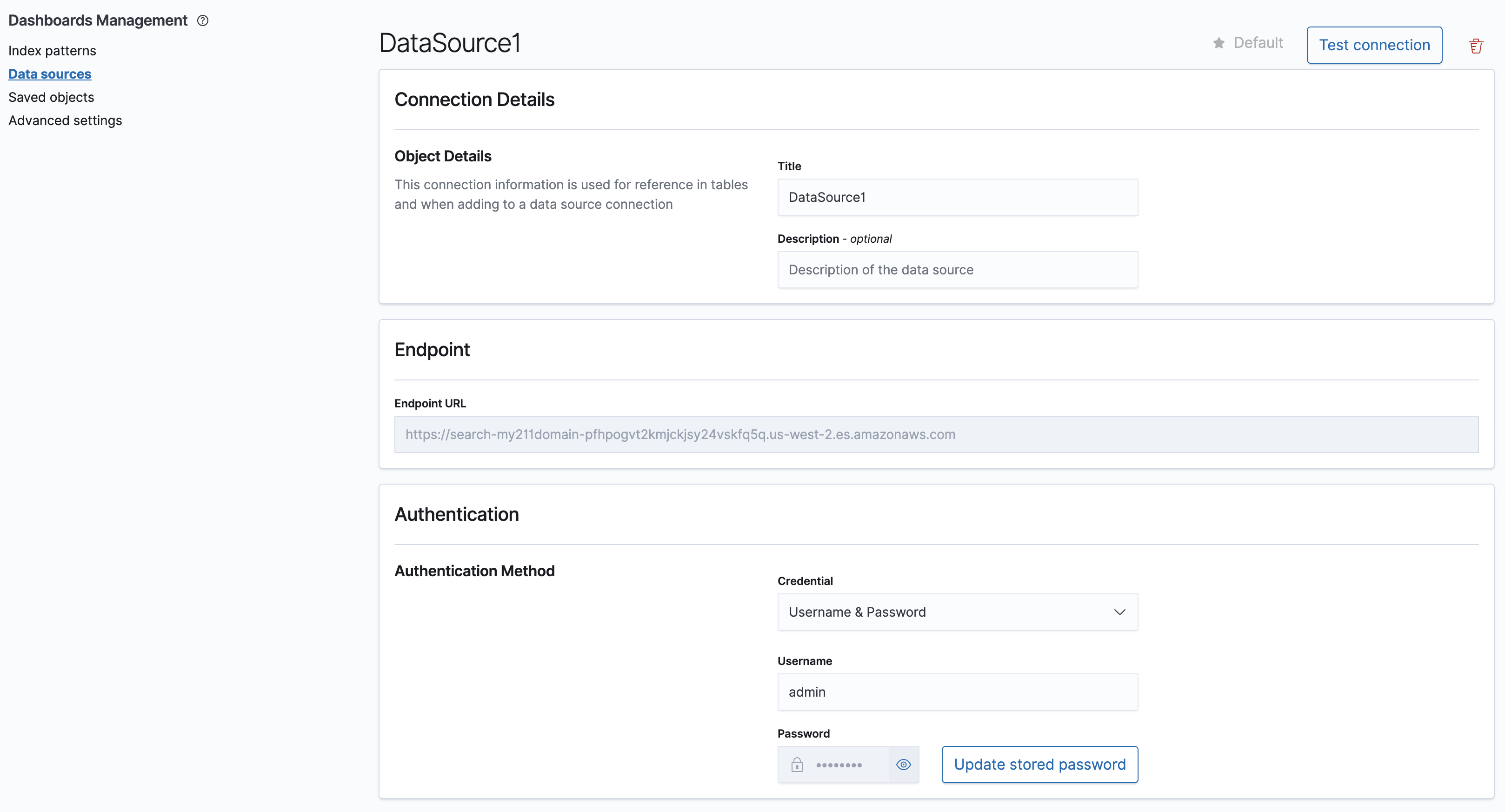
Selecting multiple data sources through the Dev Tools console
Alternatively, you can select multiple data sources through the Dev Tools console. This option allows you to work with a broader range of data and gaining a deeper understanding of your code and applications.
Watch the following 10-second video to see it in action.
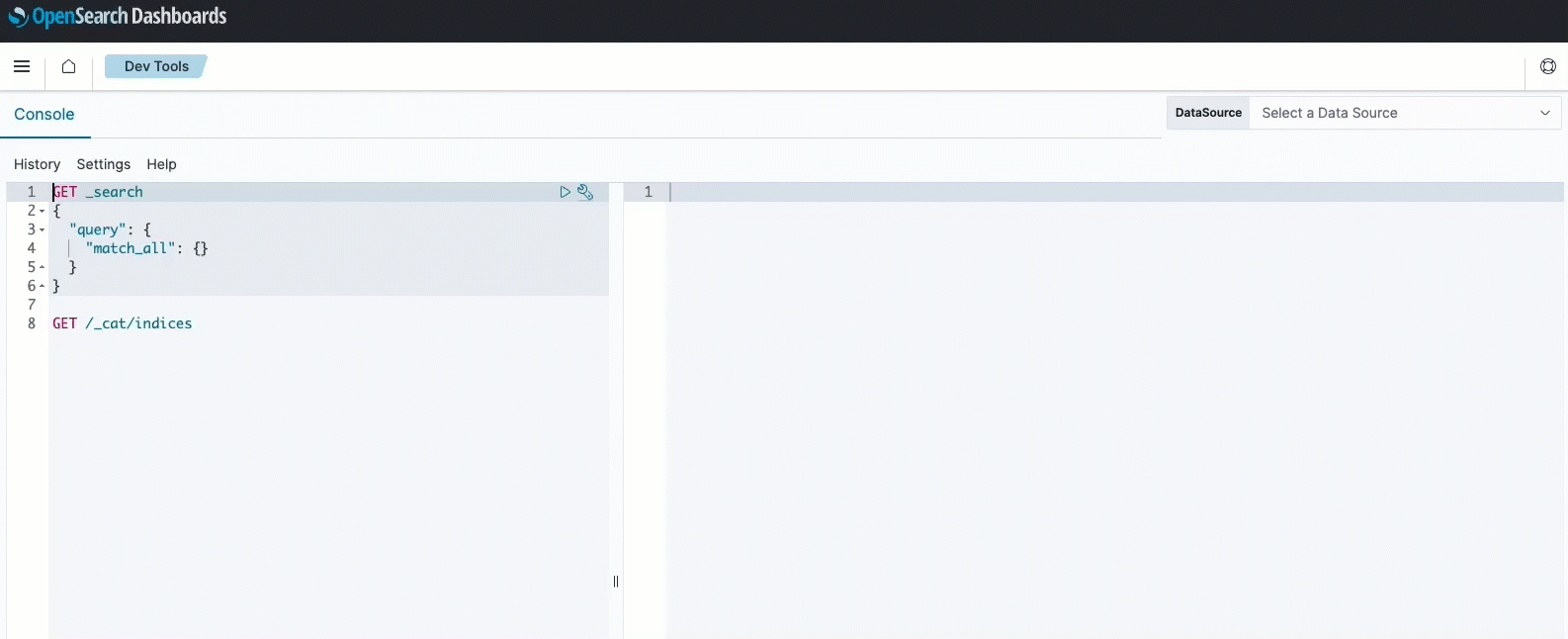
To select a data source through the Dev Tools console, follow these steps:
- Locate your copy of
opensearch_dashboards.ymland open it in the editor of your choice. - Set
data_source.enabledtotrue. - Connect to OpenSearch Dashboards and select Dev Tools in the menu.
-
Enter the following query in the editor pane of the Console and then select the play button:
GET /_cat/indices - From the Data source dropdown menu, select a data source and then query the source.
- Repeat the preceding steps for each data source you want to select.
Upload saved objects to a dashboard from connected data sources
To upload saved objects from connected data sources to a dashboard with multiple data sources, export them as an NDJSON file from the data source’s Saved object management page. Then upload the file to the dashboard’s Saved object management page. This method can simplify the transfer of saved objects between dashboards. The following 20-second video shows this feature in action.
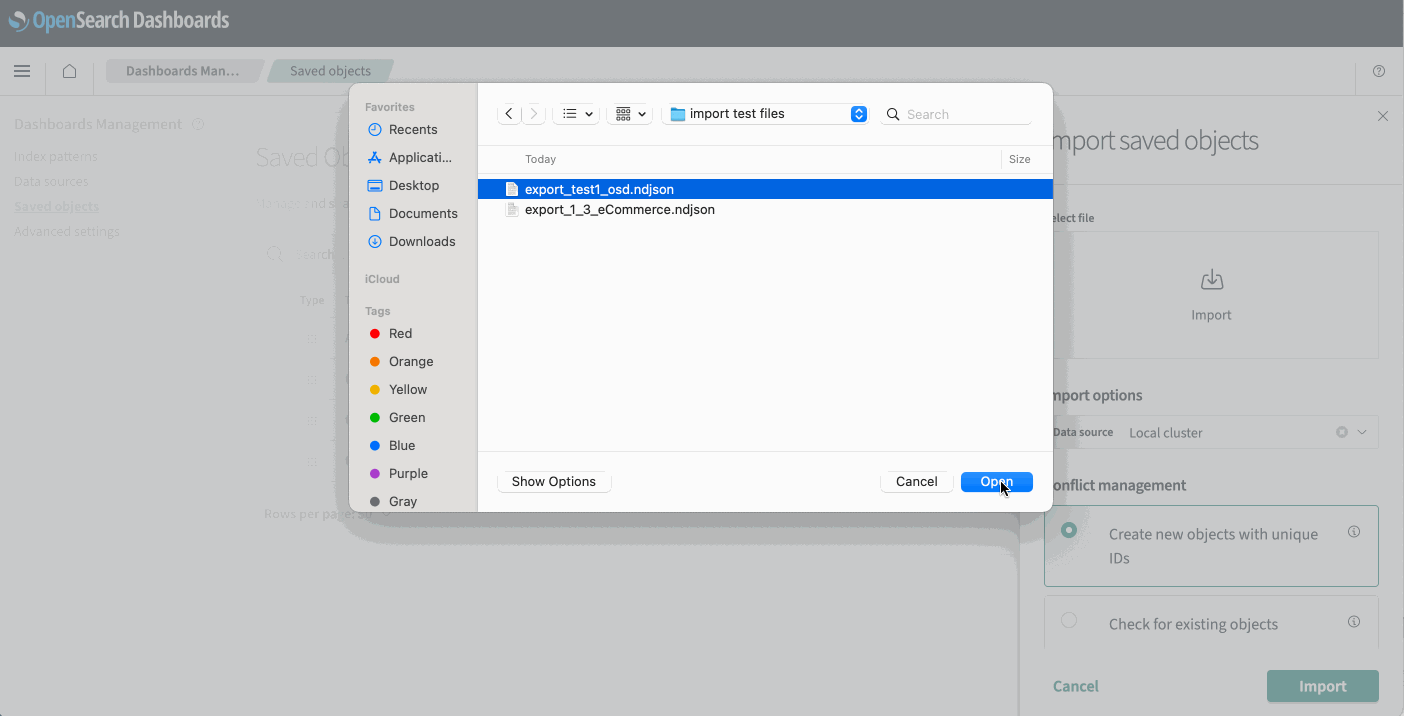
Import saved objects from a connected data source
Follow these steps to import saved objects from a connected data source:
- Locate your
opensearch_dashboards.ymlfile and open it in your preferred text editor. - Set
data_source.enabledtotrue. - Connect to OpenSearch Dashboards and go to Dashboards Management > Saved objects.
- Select Import > Select file and upload the file acquired from the connected data source.
- Choose the appropriate Data source from the dropdown menu, set your Conflict management option, and then select the Import button.
Show or hide authentication methods for multiple data sources
Introduced 2.13
A feature flag in your opensearch_dashboards.yml file allows you to show or hide authentication methods within the data_source plugin. The following example setting, shown in a 10-second demo, hides the authentication method for AWSSigV4.
# Set enabled to false to hide the authentication method from multiple data source in OpenSearch Dashboards.
# If this setting is commented out, then all three options will be available in OpenSearch Dashboards.
# The default value will be considered as true.
data_source.authTypes:
NoAuthentication:
enabled: true
UsernamePassword:
enabled: true
AWSSigV4:
enabled: false
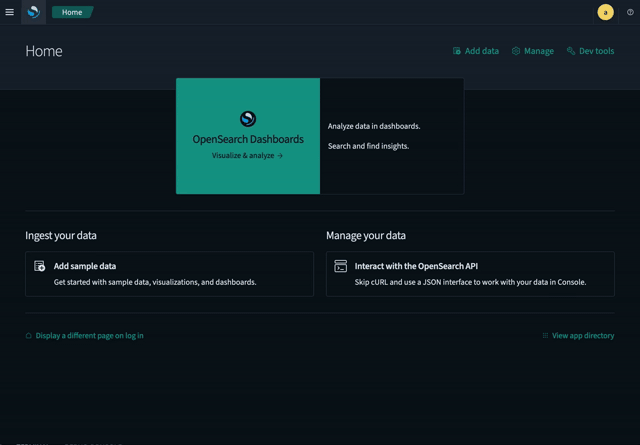
Hide the local cluster option for multiple data sources
Introduced 2.13
A feature flag in your opensearch_dashboards.yml file allows you to hide the local cluster option within the data_source plugin. This option hides the local cluster from the data source dropdown menu and index creation page, which is ideal for environments with or without a local OpenSearch cluster. The following example setting, shown in a 20-second demo, hides the local cluster.
# hide local cluster in the data source dropdown and index pattern creation page.
data_source.hideLocalCluster: true
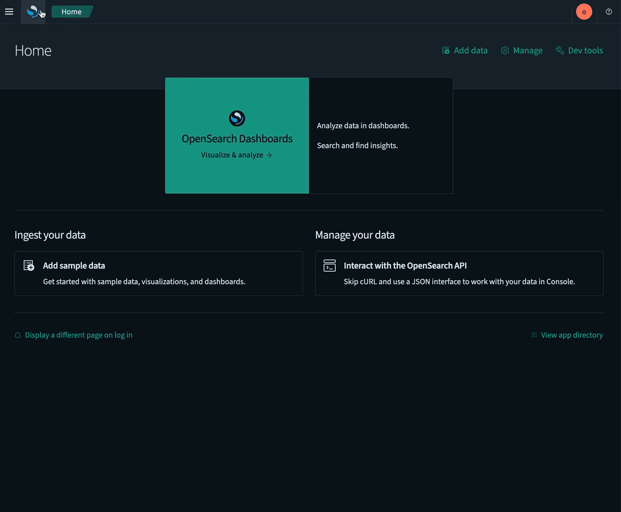
Using multiple data sources with external dashboards plugins
Introduced 2.14
The following plugins now support multiple data sources
Index management
When the data source feature is enabled, you can navigate to Index Management under the Management menu. Using indexes as an example, you can view all connected data sources and select a specific one from the navigation bar on the upper right. By default, the indexes from the designated default data source are displayed. However, you can select any connected data source to view its corresponding indexes. The following GIF illustrates these steps.
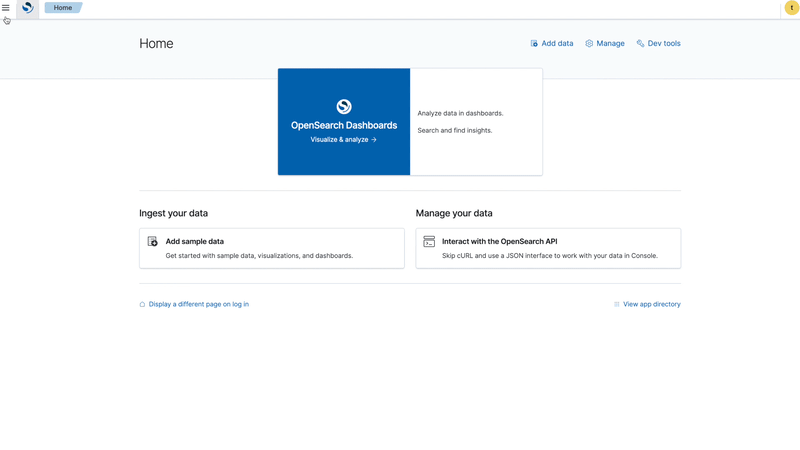
To perform operations on a specific index within a data source, select the individual index from the list. To create a new index, select the Create Index button, which opens a form. Fill in the required information and select the Create button. The index is created within the selected data source. The following GIF illustrates these steps.
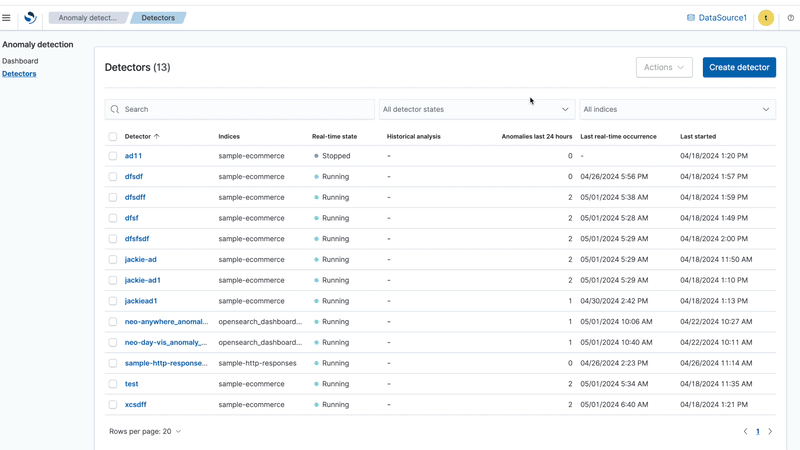
Anomaly detection
When the data source feature is enabled, you can navigate to Anomaly Detection under the OpenSearch Plugins menu. On the navigation bar on the upper right, you can view all connected data sources and select a specific data source to view the dashboard from that source if it has detectors. If the selected data source does not have any detectors, the page prompts you to Create detector. The following GIF illustrates these steps.

When you select Detectors from the side bar, the page displays the detectors currently configured for the selected data source. You can view and configure individual detectors by selecting them from the list. The following GIF illustrates these steps.
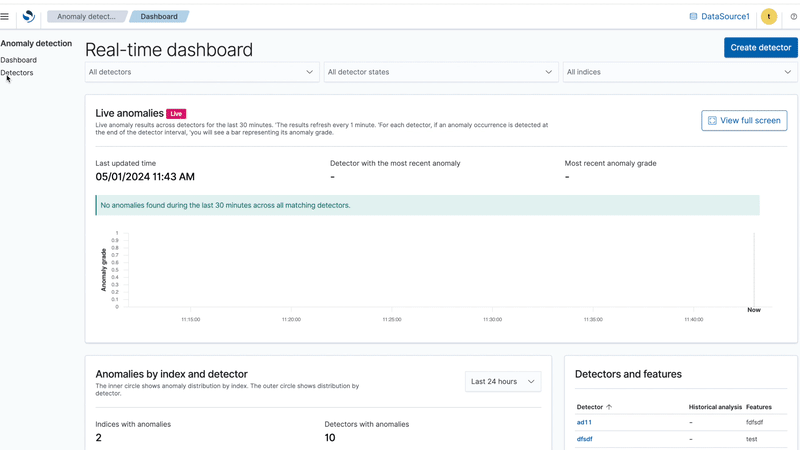
Security
When the data source feature is enabled, you can navigate to Security under the Management menu. Using role management as an example, you can view all connected data sources in the navigation bar on the upper right and select a specific data source to view its existing roles. To create a new role, select the Create role button, which takes you to a new page. Enter the required information and select Create to add the new role to the selected data source. The following GIF illustrates these steps.
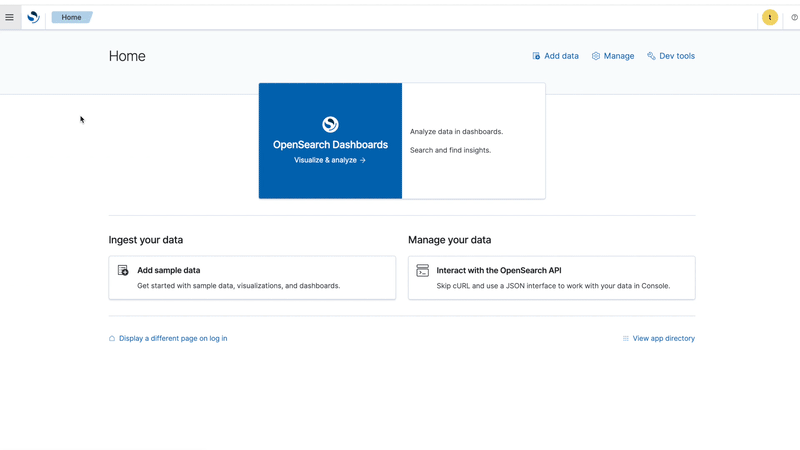
Maps
When the data source feature is enabled, you can navigate to Maps under the OpenSearch Plugins menu. To edit an existing map, select it from the maps list page, which opens the edit page. On the edit page, you can view all available data sources and the ones currently used in the map. To add a new layer, select Add layer, and then select Documents from the prompt, which opens a flyout. In the flyout, select the index pattern and geospatial field. Note that the data source name is prefixed to the index pattern name. After selecting Update, the new layer is added. Select the ![]() icon to verify that a new data source is now being used in the map. The following GIF illustrates these steps.
icon to verify that a new data source is now being used in the map. The following GIF illustrates these steps.
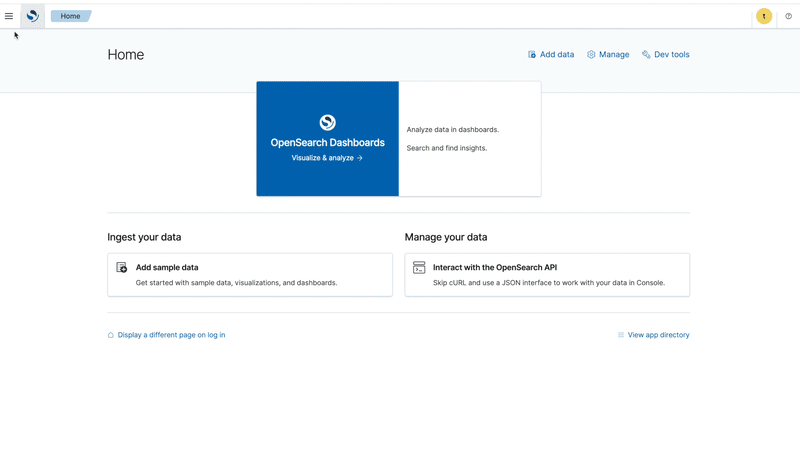
Machine learning
When the data source feature is enabled, you can navigate to Machine Learning under the OpenSearch Plugins menu. Initially, the models within the default data source are displayed. To view models from a different data source, switch to that data source from the navigation bar. To inspect the details of a specific model, select the ![]() icon to the right of the model entry. The following GIF illustrates these steps.
icon to the right of the model entry. The following GIF illustrates these steps.
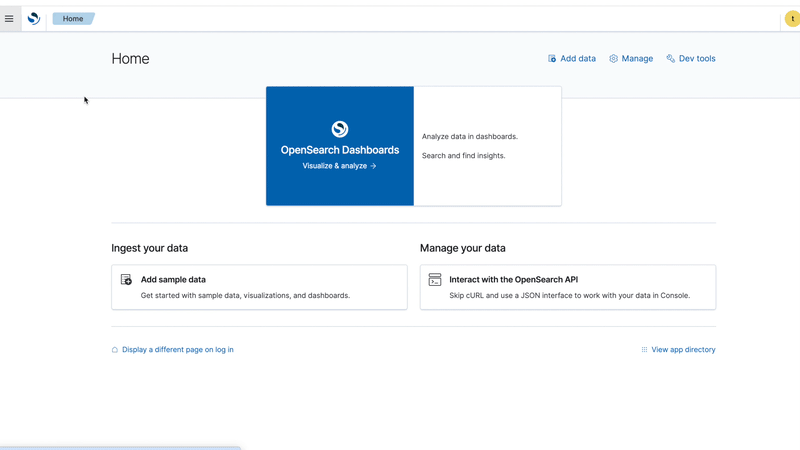
Notifications
When the data source feature is enabled, you can navigate to Notifications under the Management menu. The page displays the notification channels configured for the currently selected data source. To view channels from a different data source, select the desired data source from the menu. To view or edit the details of an existing channel, select it from the list, which opens the channel details page. The following GIF illustrates these steps.
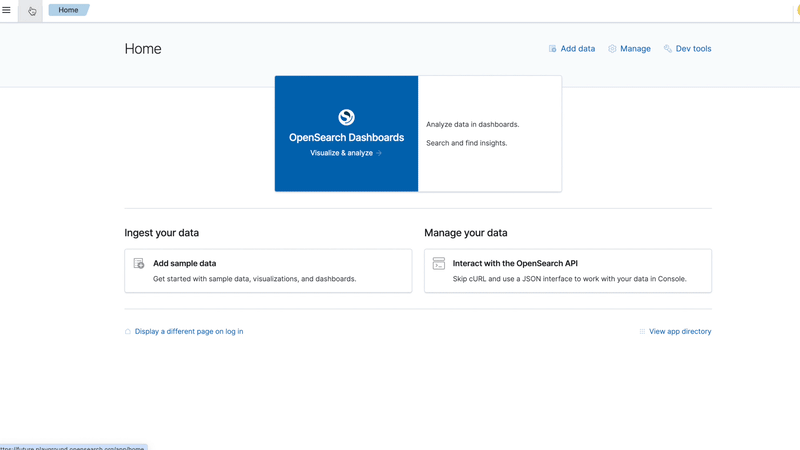
Search relevance
When the data source feature is enabled, you can navigate to Search Relevance under the OpenSearch Plugins menu. On the navigation bar on the upper right, you can view all available data sources. To compare search results between indexes from different data sources, first select a data source and an index for Query 1, and then select a data source and an index for Query 2. Select Search to run the queries. The following GIF illustrates these steps.
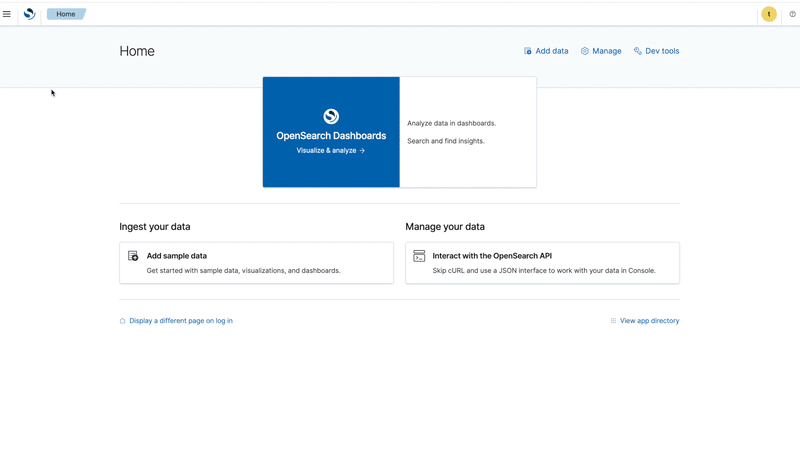
Next steps
After configuring multiple data sources, you can analyze the data from each source. Refer to the following resources for more information:
- Learn about managing index patterns through OpenSearch Dashboards.
- Learn about indexing data using Index Management through OpenSearch Dashboards.
- Learn about how to connect OpenSearch and Amazon S3 through OpenSearch Dashboards.
- Learn about the Integrations tool, which gives you the flexibility to use various data ingestion methods and connect data from the Dashboards UI.
Limitations
The following features are not supported when using multiple data sources:
- Timeline visualization types
- Some external plugins, such as the
gantt-chartplugin